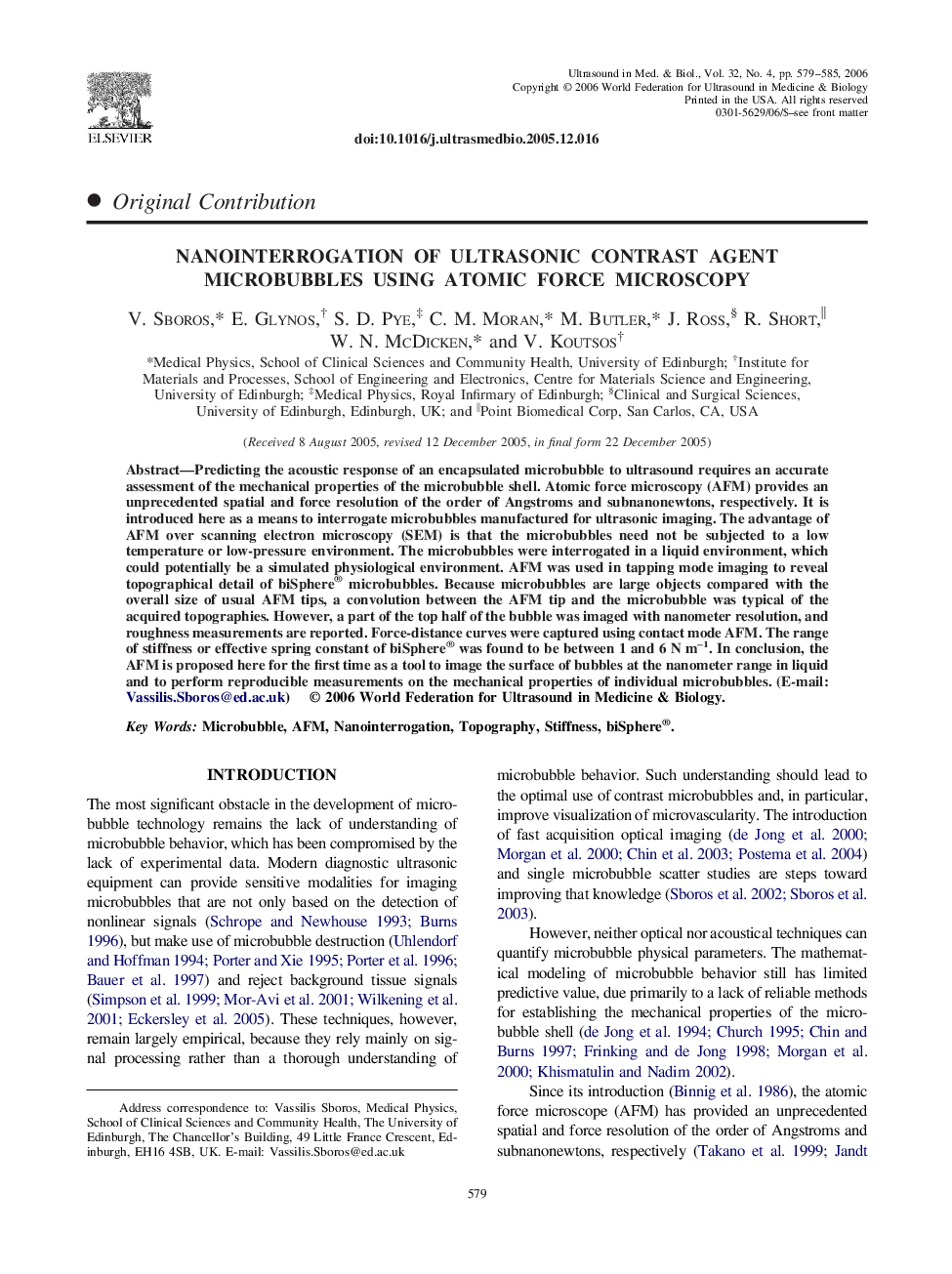| Article ID | Journal | Published Year | Pages | File Type |
|---|---|---|---|---|
| 1762858 | Ultrasound in Medicine & Biology | 2006 | 7 Pages |
Abstract
Predicting the acoustic response of an encapsulated microbubble to ultrasound requires an accurate assessment of the mechanical properties of the microbubble shell. Atomic force microscopy (AFM) provides an unprecedented spatial and force resolution of the order of Angstroms and subnanonewtons, respectively. It is introduced here as a means to interrogate microbubbles manufactured for ultrasonic imaging. The advantage of AFM over scanning electron microscopy (SEM) is that the microbubbles need not be subjected to a low temperature or low-pressure environment. The microbubbles were interrogated in a liquid environment, which could potentially be a simulated physiological environment. AFM was used in tapping mode imaging to reveal topographical detail of biSphere® microbubbles. Because microbubbles are large objects compared with the overall size of usual AFM tips, a convolution between the AFM tip and the microbubble was typical of the acquired topographies. However, a part of the top half of the bubble was imaged with nanometer resolution, and roughness measurements are reported. Force-distance curves were captured using contact mode AFM. The range of stiffness or effective spring constant of biSphere® was found to be between 1 and 6 N m-1. In conclusion, the AFM is proposed here for the first time as a tool to image the surface of bubbles at the nanometer range in liquid and to perform reproducible measurements on the mechanical properties of individual microbubbles. (E-mail: Vassilis.Sboros@ed.ac.uk)
Keywords
Related Topics
Physical Sciences and Engineering
Physics and Astronomy
Acoustics and Ultrasonics
Authors
V. Sboros, E. Glynos, S.D. Pye, C.M. Moran, M. Butler, J. Ross, R. Short, W.N. McDicken, V. Koutsos,
